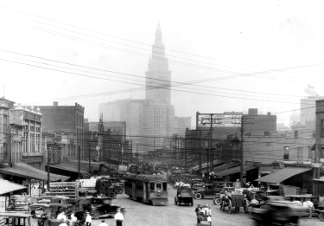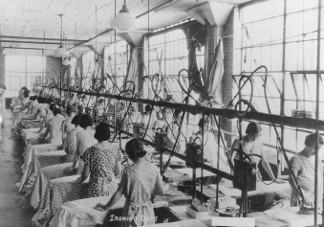RICE, HARVEY (11 June 1800-7 Nov. 1891), reorganizer of Ohio schools, was born in Conway, Mass., to Stephen and Lucy (Baker) Rice. He graduated from Williams College (1824) and came to Cleveland as a teacher. In 1826 he studied law, and eventually entered into partnership with REUBEN WOOD†. Rice became justice of the peace in 1829, and was Democratic representative to the Ohio legislature in 1830. In 1831, he was appointed agent for the school land sales of the Connecticut Western Reserve, with the $150,000 received being deposited into a fund for educating the children of the Western Reserve.
From 1834-41 Rice was clerk of the common pleas and supreme courts. He was elected in 1851 to the Ohio senate, introducing a bill reorganizing the common schools of Ohio, creating a uniform district structure and establishing an equitable system of taxation to benefit all schools. He also introduced a bill establishing reform farms for criminal youth. Both bills passed in 1853. As a member of Cleveland city council in 1857, Rice secured passage of a resolution consolidating the Industrial School and CHILDREN'S AID SOCIETY, and introduced a resolution resulting in the erection of the PERRY MONUMENT. From 1861-63 Rice was president of the Cleveland Board of Education. He became director of the CLEVELAND WORKHOUSE in 1871. From 1879 until his death, he was president of the EARLY SETTLERS ASSN. OF THE WESTERN RESERVE Rice wrote Pioneers of the Western Reserve, Nature and Culture, and Mount Vernon and Other Poems.
Rice married twice. He and his first wife, Fanny (d.1837) had four children: Percy and Fanny, two others died in infancy. In 1840 Rice married Emma Marie Wood. They had five children: Henrietta, Emma, Mary, James, and Harvey. Rice died in Cleveland and was buried in LAKE VIEW CEMETERY.
Akers, William J. Cleveland Schools in the Nineteenth Century (1901).
Freese, Andrew. Early History of the Cleveland Public Schools (1876).
Harvey Rice Papers, WRHS.
Last Modified: 22 Jul 1997 10:43:30 AMRice, Harvey. Leaflets of a Lifetime (1895).
- Related Article(s)









